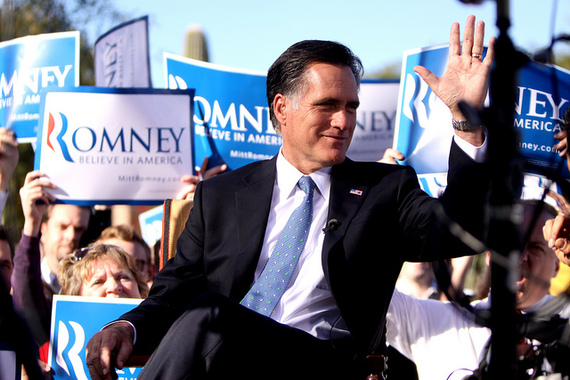In the months leading up to the 2012 presidential election between Barack Obama and Mitt Romney, a few media outlets reinforced the public perception that Mormons (members of the Church of Jesus Christ of Latter-day Saints) were mostly white. Jimmy Kimmel asked on Jimmy Kimmel Live!, “Are there black Mormons? I find that hard to believe.” Reporter Jessica Williams from Jon Stewart’s The Daily Show interviewed five black Mormons, calling them “mythical creatures, the unicorns of politics.” She asked whether or not the five Mormons she met comprised the entire population of black people in the Church of Jesus Christ of Latter-day Saints. Susan Saulny, a reporter for the New York Times, similarly speculated…
In the months leading up to the 2012 presidential election between Barack Obama and Mitt Romney, a few media outlets reinforced the public perception that Mormons (members of the Church of Jesus Christ of Latter-day Saints) were mostly white. Jimmy Kimmel asked on Jimmy Kimmel Live!, “Are there black Mormons? I find that hard to believe.” Reporter Jessica Williams from Jon Stewart’s The Daily Show interviewed five black Mormons, calling them “mythical creatures, the unicorns of politics.” She asked whether or not the five Mormons she met comprised the entire population of black people in the Church of Jesus Christ of Latter-day Saints. Susan Saulny, a reporter for the New York Times, similarly speculated that there were only a “very small number” of black Mormons, a “couple of thousand max” or somewhere between “500 to 2,000.” All three broadcasts revealed a public perception problem for Mormons in the twenty-first century — that they are too white.
The irony lies in the historical evolution of that public perception. Black Saints were among the first to arrive in the Salt Lake Valley in 1847 and have been a part of the Mormon experience from its beginnings. The first documented black person to join this American-born faith was Black Pete, a former slave who was baptized in 1830, when the fledgling movement was less than a year old. Other blacks trickled in over the course of the nineteenth century and are woven into the Mormon story. At least two black men were ordained to the faith’s highest priesthood in its first two decades.
Mormons were so inclusive in the nineteenth century that accusations from the outside tended to focus on the perception that they welcomed everyone. In an American culture that favored the segregation and exclusion of marginalized groups, the Mormons stood out. The allegations leveled against them included that they had “opened an asylum for rogues and vagabonds and free blacks,” that they embraced “all nations and colors,” that they maintained “communion with the Indians,” and that their missionaries “walk[ed] out” with “colored women.” The perception was that they welcomed “all classes and characters,” received “aliens by birth,” and integrated people from “different parts of the world” into their communities and congregations.
Within a few months of Black Pete’s conversion in Ohio, news reports in Pennsylvania and New York announced that the Mormons had a black man worshiping with them. The reports were not intended as compliments. In Missouri, Mormons were accused of inviting free blacks to the state to incite a slave rebellion and to steal white wives and daughters. Even white Mormons were suspect. One report complained that they had “nearly reached the low condition of the black population,” and another said that the Mormons were “little above the condition of our blacks either in regard to property or education.” Especially after 1852, when Mormons openly practiced polygamy, outsiders projected their fears of race mixing onto the Mormons. Political cartoons liked to imagine multi-racial Mormon families run amok in the Great Basin. In the minds of outsiders, polygamy was not merely destroying the traditional family, it was destroying the white race.
Mormons were certainly aware of the ways in which their status as white people was challenged. One leader acknowledged, “we are not accounted as white people,” while another complained that Mormons were treated “as if we had been some savage tribe, or some colored race of foreigners.”
In the nineteenth century, one way to measure whiteness was in distance from blackness — and so it was with the Mormons. Over the course of the nineteenth century, they moved away from their own black converts toward whiteness. In an uneven process, Mormon leaders barred black men from the lay priesthood and black men and women from the faith’s crowning temple rituals, policies firmly held in place by the early twentieth century.
So successful were Mormons at claiming whiteness for themselves that by the time Mitt Romney sought the White House in 2012, he was described as the “whitest white man to run for president in recent memory.” Even though the Church of the Latter-day Saints includes over one million members in Brazil and 400,000 in Africa and is more racially diverse in the United States than mainline Protestant churches, public perception lags behind.

Jimmy Kimmel’s query from 2012 — “Are there black Mormons? I find that hard to believe” — is the polar opposite of the racial problem that Mormons faced in the 1830s. This shift marks a historic evolution for Mormons, from their nineteenth-century beginnings as a congregation “not white enough” to its current status as “too white.”
This post originally appeared on the OUPBlog.
Image Credit: “Mitt Romney” by Gage Skidmore. CC BY SA 2.0 via Flickr.
— This feed and its contents are the property of The Huffington Post, and use is subject to our terms. It may be used for personal consumption, but may not be distributed on a website.
Visit source:




















